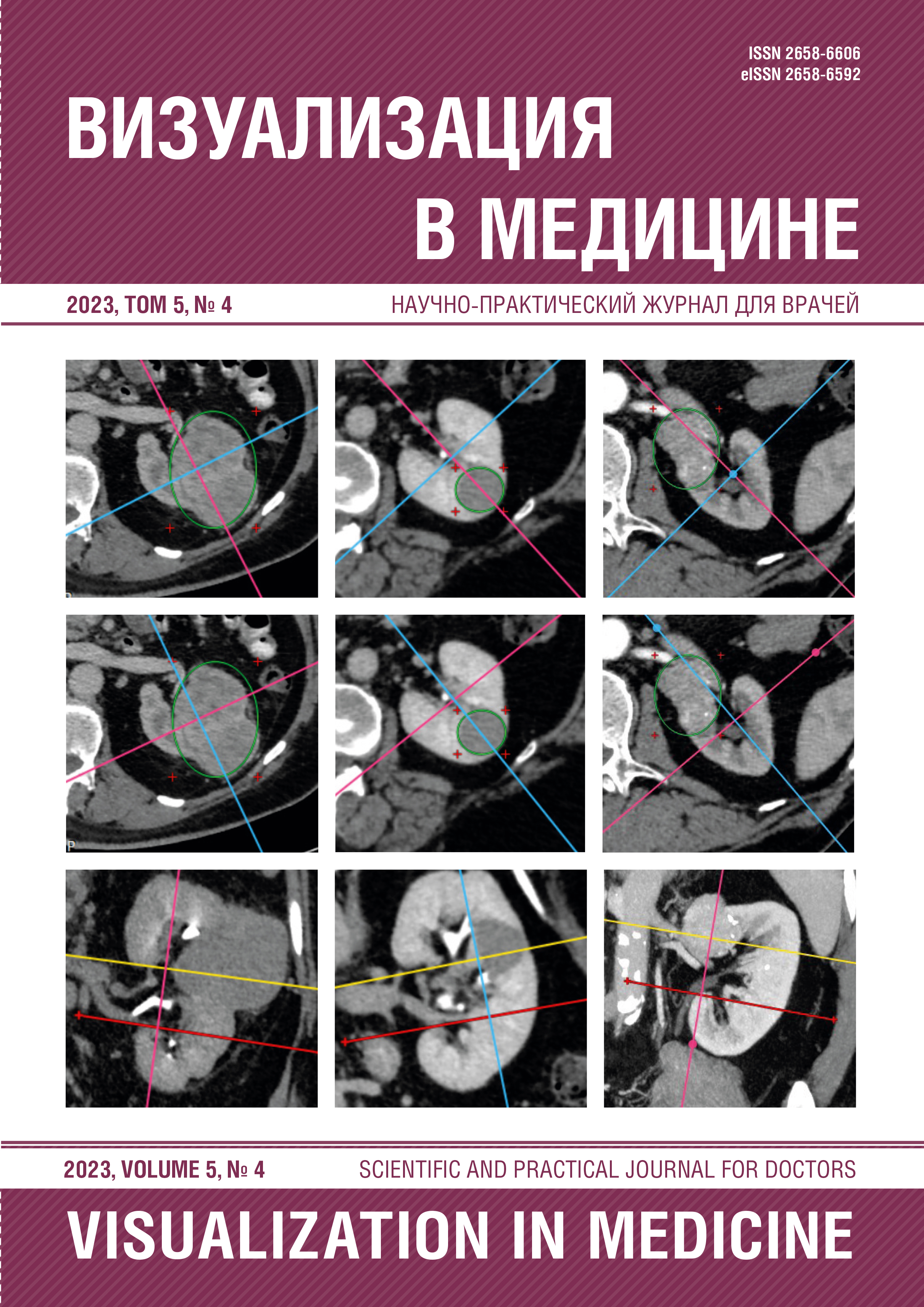ОПТИМИЗАЦИЯ МЕТОДИКИ ПОДАВЛЕНИЯ ВОДЫ МУЛЬТИВОКСЕЛЬНОЙ ПРОТОННОЙ МАГНИТНО- РЕЗОНАНСНОЙ СПЕКТРОСКОПИИ ПРИ ПОМОЩИ ФАНТОМОВ
Аннотация
Введение. Протонная магнитно-резонансная спектроскопия позволяет определить изменения метаболических процессов в тканях головного мозга при различных заболеваниях центральной нервной системы. Однако следует отметить, что диагностические возможности протонной магнитно-резонансной спектроскопии зависят от качества подавления водного сигнала. Существуют различные методы подавления водного сигнала, но не всегда тот или иной метод позволяет получить убедительные данные. Целью исследования была оптимизация методики подавления воды мультивоксельной протонной магнитно-резонансной спектроскопии. Материалы и методы: для оптимизации методики мультивоксельной протонной магнитно-резонансной спектроскопии и выбора программы подавления H2O проведено экспериментальное исследование на фантомах с использованием различных программ и параметров используемых последовательностей. Использовались программы STEAM и PRESS мультивоксельной протонной магнитно-резонансной спектроскопии. Технические параметры исследования: период повторения последовательности TR = 5000 мс, время ожидания эхо-сигнала TE = 144 мс, количество накоплений — 256, с локализации объемной сетки вокселей, равномерно распределенной по объему фантома, матрица 180×180, размеры вокселей составили до 10×10×10 мм. Методы подавления сигнала воды: Гаусс, CHESS и MOIST. Результаты: по полученным нами данным при сравнении максимальных и минимальных значений высоты пиков H2O на оси ординат спектрограмм наилучшим методом подавления воды был MOIST, при этом последовательность протонной магнитно-резонансной спектроскопии STEAM несколько уступает последовательности PRESS. Выводы: таким образом, опытным путем была определена лучшая методика мультивоксельной протонной магнитно-резонансной спектроскопии для подавления сигнала от воды — PRESS с параметрами: ТЕ = 144 с, TR = 5000 мс и подавлением сигнала Н2О методом MOIST.
Литература
Афонский А.А., Дьяконов В.П. Цифровые анализаторы спектра, сигналов и логики. Под ред. проф. В. П. Дьяконова. М.: СОЛОН-Пресс; 2009.
Магнитно-резонансная спектроскопия. Под редакцией Труфанова Г.Е., Тютина Л.А. СПб.: ЭЛБИ-СПб.; 2008.
Azab S.F., Sherief L.M., Saleh S.H. et al. Childhood temporal lobe epilepsy: correlation between electroencephalography and magnetic resonance spectroscopy: a case–control study. Ital J Pediatr. 2015; 41: 32. DOI: 10.1186/s13052-015-0138-2.
Barker P.B., Bizzi A., De Stefano N. et al. Spectroscopy: Techniques and Applications, Cambridge University Press, Cambridge, UK. 2009. DOI:10.1017/CBO9780511770647.
Haase A., Frahm J., Hanicke W., Matthae D. 1H NMR Chemical Shift Selective Imaging, Phys. Med. Biol. 1985; 30: 341–4. DOI: 10.1088/0031-9155/30/4/008. PMID: 4001160.
Hardan A.Y., Fung L.K., Frazier T. et al. A proton spectroscopy study of white matter in children with autism. Prog Neuropsychopharmacol Biol Psychiatry. 2016; 66: 48–53. DOI: 10.1016/j.pnpbp.2015.11.005.
Ito H., Mori K., Harada M. et al. A Proton Magnetic Resonance Spectroscopic Study in Autism Spectrum Disorder Using a 3-Tesla Clinical Magnetic Resonance Imaging (MRI) System: The Anterior Cingulate Cortex and the Left Cerebellum. Journal of Child Neurology. 2017; 32: 731–9. DOI: 10.1177/0883073817702981. Epub 2017 Apr 19. PMID: 28420309.
Kubas B., Kułak W., Sobaniec W. et al. Metabolite alterations in autistic children: a 1H MR spectroscopy study. Adv Med Sci. 2012; 57(1): 152–6. DOI: 10.2478/v10039-012-0014-x.
Liserre R., Pinelli L., Gasparotti R. MR spectroscopy in pediatric neuroradiology. Translational pediatrics. 2021; 10(4): 1169–1200. DOI: 10.21037/tp-20-445. PMID: 34012861; PMCID: PMC8107850.
Robin A. de Graaf, Nicolay K. Adiabatic water suppression using frequency selective excitation. Magn Reson Med. 1998; 40: 690–6. https://doi.org/10.1002/mrm.1910400508.



